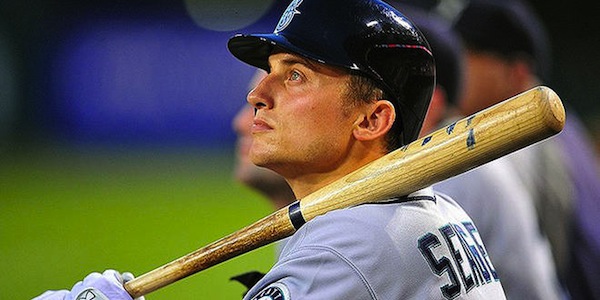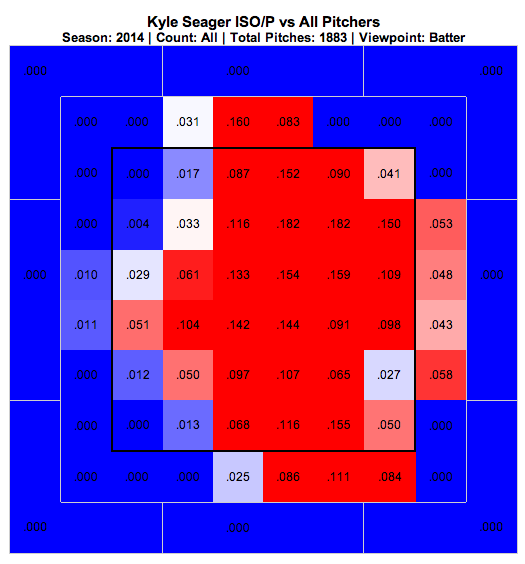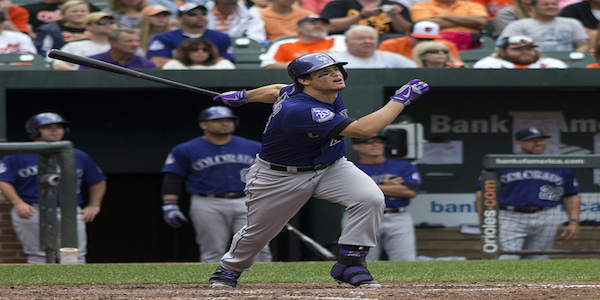2014 Fantasy Baseball: Kyle Seager Is Consistent, Yet Improving

I’ve been on a consistency kick lately. I’m not really sure how I ended up there, but I did. Over the past two weeks, I’ve written about Nick Swisher – clockwork consistency for many years – and Lucas Duda – perhaps our new Swisher.
Almost to a fault we associate consistency with older players that have less perceived upside. They’re safe, or not sexy, depending on how you read the piece, I guess. Young players can fall into that bin, though. How many years does it take someone to become consistent in your mind? Personally, two to three years is plenty for me in most cases. Which brings us to the man of the hour: Kyle Seager.
[am4show have=’p13;p7;p11;p4;p3;’ guest_error=’Front Office’ user_error=’Front Office’ ]
Seager’s sauntered to the dish 2030 times in his young career, which has spanned nearly three seasons. His numbers, per 162 game paces, are below.
| Year | R | HR | RBI | SB | AVG | OBP | SLG |
|---|---|---|---|---|---|---|---|
| 2012 | 65 | 21 | 90 | 14 | 0.259 | 0.316 | 0.423 |
| 2013 | 81 | 23 | 70 | 10 | 0.26 | 0.338 | 0.426 |
| 2014 | 69 | 26 | 104 | 7 | 0.276 | 0.344 | 0.479 |
He’s probably been a little better than you thought, and he’s trending in the right direction, seeing his wRC+ mark rise each season. He’s gotten better at getting on base each season. And now he’s tapping into even more power. But what’s amazing about Seager’s production is how satisfyingly static the components that go into it are.
After swinging a little too often in 2012, Seager began to cut back. And he never looked back. Since altering his approach, Seager’s walk rate has increased – although it’s dropped a little this season – and he’s gotten into favorable counts much more often. Most importantly, he’s not swinging at pitches he struggles with. Swisher – profiled above – has struggled with this: swinging at breaking balls and offspeed pitches – pitches he’s historically been poor against – more than he used to. Seager’s done the opposite, dropping his swing percentage versus all pitches, but versus secondary offerings, in particular. It doesn’t stop there, though. He’s quit swinging at pitches in locations he struggles with, too.
In 2012, he struggled with pitches up in the zone, and he swung at them often. Those struggles were still present in 2013, although less so, in part because he quit swinging at those pitches so often. He’s swung at pitches up even less in 2014, essentially neutralizing his largest struggle zone – except the upper outer third, which is a bitch, anyways – in the process. Cutting down on the sheer amount of swings you take is one thing, but cutting down on swings that are hurting you the most? That’s huge; and it looms even larger when those gains materialize into you crushing pitches in your zone more.

Seager’s walled off the plate: throw middle or in at your own peril; he’ll even punish you up and in now, a stark change from 2012. Seager’s still predominantly pitched over the outer third, because … well, you saw the graph. Seager’s biggest asset at the plate is his pull power, which ranks in the top 10. Pitchers do their best to stay away from it, but it hasn’t worked much. He’s been able to hit the mistakes pitchers have made, along with “muscling up” on some while pulling the ball more each year.
| Year | Pull% | Air Pull% | Pull ISO | Pull HR/FB |
|---|---|---|---|---|
| 2012 | 36.0% | 29.6% | 0.352 | 34.0% |
| 2013 | 42.0% | 31.2% | 0.356 | 39.6% |
| 2014 YTD | 48.3% | 34.8% | 0.429 | 46.2% |
Matt Carpenter doesn’t pull the ball enough to hit for power; Seager does. And it makes sense, because Seager’s never been very good at going the other way. For his career, Seager’s posted a 228 wRC+ mark, while pulling the ball; it’s at 62 when he goes the other way. Some guys aren’t meant to spray the ball all over the yard, no matter how much we’d like that. Seager’s working with what he’s good at it, and he’s getting better at it. Sure, there’s a tipping point, but we haven’t gotten there yet.
Seager’s probably going to be valued highly next season. He’s going to have the “RBI guy” label. And that’s fair, considering only three third basemen have driven in more runs since 2012. The good thing is, Seager still has some room for growth. Seager’s entering his power prime, and even though Safeco smothers him a little, it wouldn’t be a surprise for him to flirt with 30 home runs. Even if he doesn’t, he’s proven he’s good for at least low twenties, and in today’s game that’s an asset worth targeting.
[/am4show]




